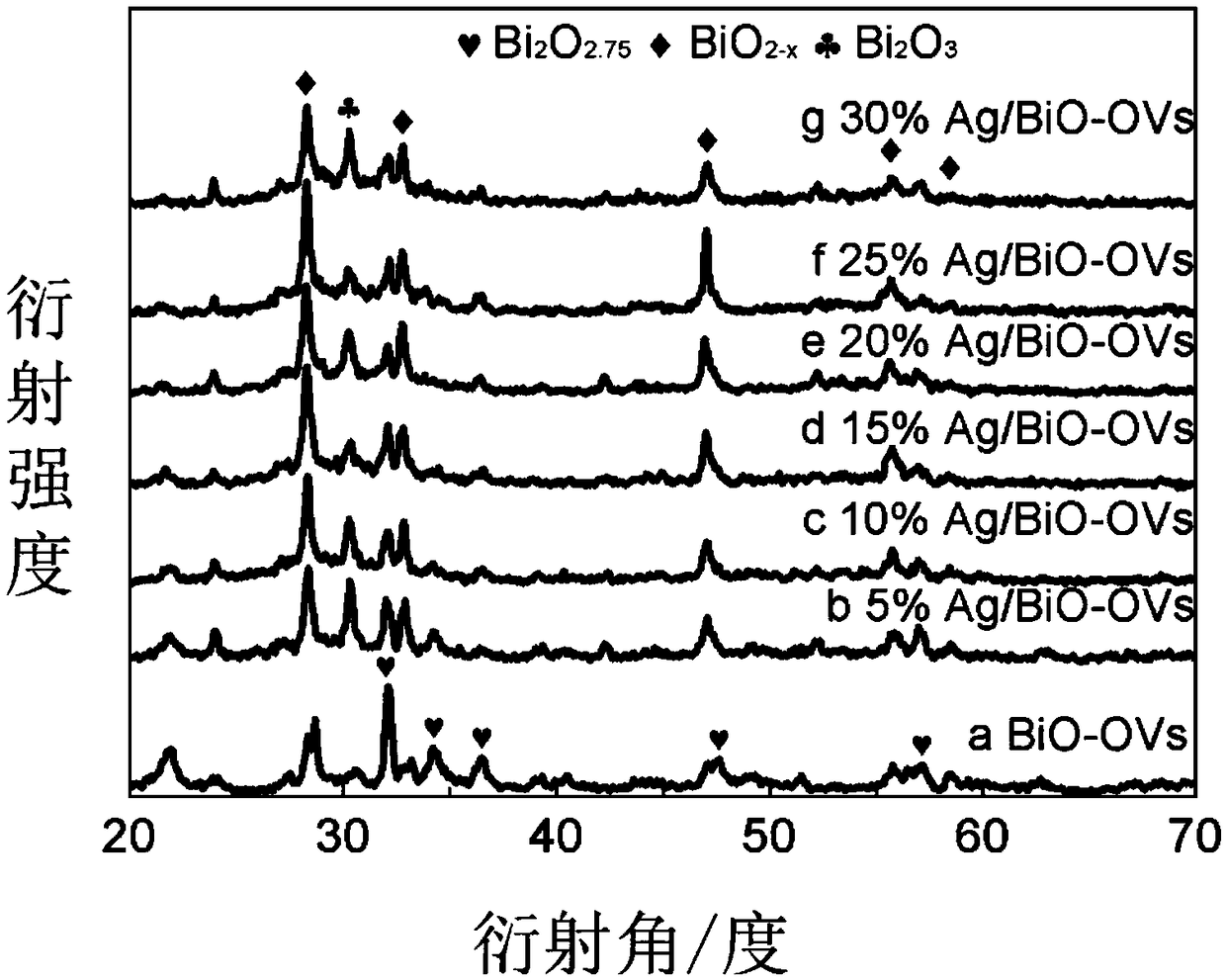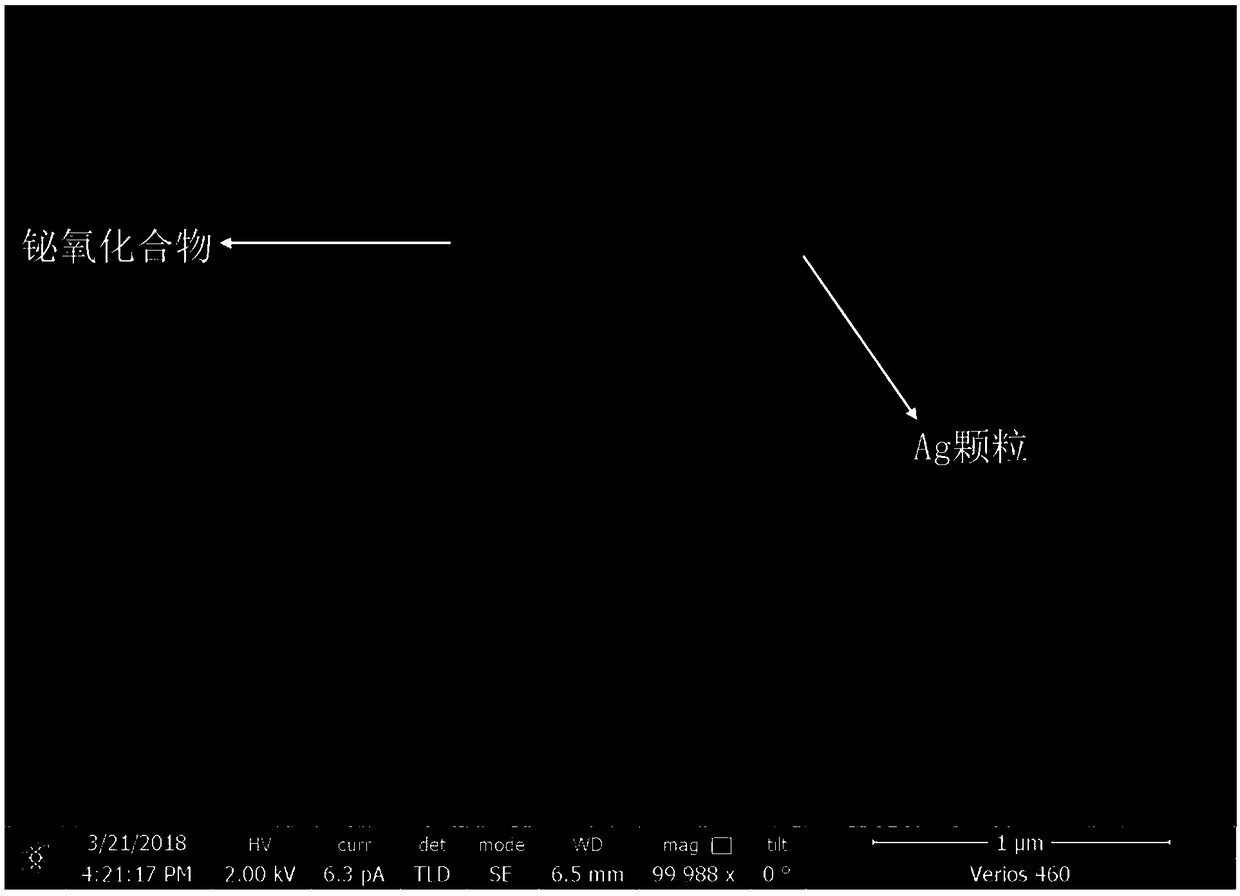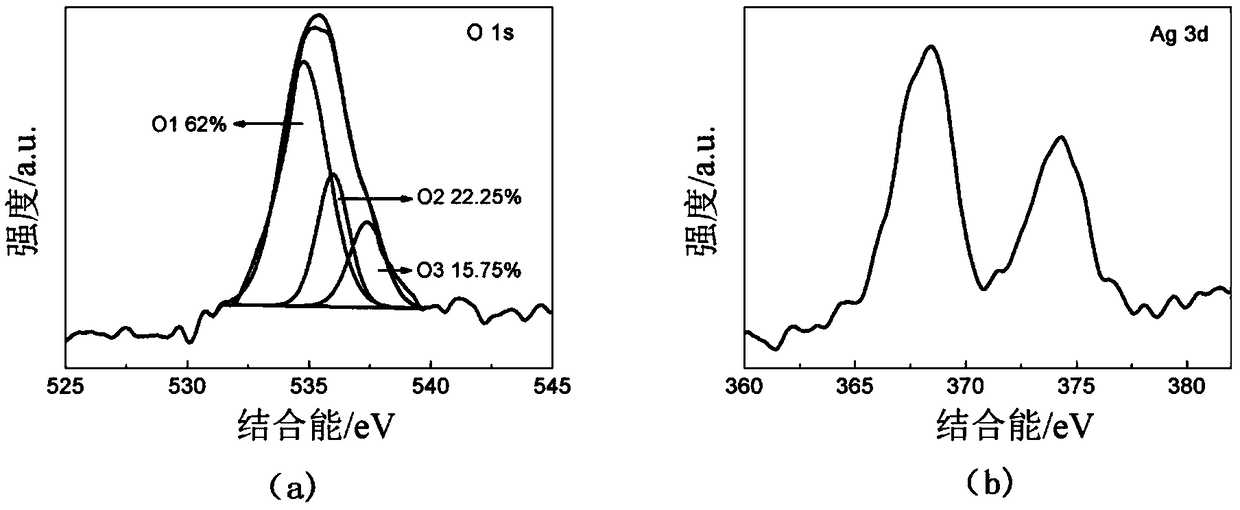Ag/BiO2-x/Bi2O3/Bi2O2.75 composite photocatalyst, preparation method and application
A catalyst and composite light technology, applied in metal/metal oxide/metal hydroxide catalysts, physical/chemical process catalysts, chemical instruments and methods, etc., can solve the problem of difficulty in using far-infrared light and low utilization rate of sunlight problems, to achieve the effect of simple process, improved utilization rate and mild reaction conditions
- Summary
- Abstract
- Description
- Claims
- Application Information
AI Technical Summary
Problems solved by technology
Method used
Image
Examples
Embodiment 1
[0045] Step 1: Add 0.5g NaBiO 3 The powder was dissolved in 20mL 3.0mol / L NaOH solution, and magnetically stirred to obtain solution A;
[0046] Step 2: Slowly disperse solution A into 20mL deionized water under the condition of magnetic stirring to obtain the reaction precursor;
[0047] Step 3: Add the reaction precursor solution into the hydrothermal reaction kettle, place the hydrothermal reaction kettle in the hydrothermal synthesizer, and react at 170°C for 40 minutes; the filling ratio of the reaction precursor solution is 60%;
[0048] Step 4: After the reaction is completed, cool naturally to 70°C, take out the precipitate in the hydrothermal reaction kettle, wash with deionized water and absolute ethanol, and finally dry at a constant temperature at 70°C to obtain Bi 2 o 2.75 / BiO 2-x Composite photocatalysts, denoted as BiO-OVs.
Embodiment 2
[0050] Step 1: Add 0.5g NaBiO 3 Add to 20mL 3mol / L NaOH solution and stir evenly to get NaBiO 3 NaOH solution, and then disperse the above solution into 20mL deionized water and stir evenly to obtain the reaction precursor solution, and react at 170°C for 40min by hydrothermal method to prepare Bi 2 o 2.75 / BiO 2-x Composite photocatalyst; Wherein, the filling ratio of reaction precursor liquid is 60%;
[0051] Step 2: Add 0.3g Bi 2 o 2.75 / BiO 2-x The composite photocatalyst was dispersed into 30mL deionized water, and stirred for 30min under indoor light conditions to obtain suspension A;
[0052] Step 3: Add 0.015g AgNO 3 Disperse in 30mL deionized water, and ultrasonicate for 30min to obtain solution B;
[0053] Step 4: Slowly disperse solution B into suspension A, and stir at high speed for 2 hours under natural light;
[0054] Step 5: After the reaction is completed, the obtained powder is washed three times with deionized water and absolute ethanol, and dried a...
Embodiment 3
[0056] Step 1: Add 0.5g NaBiO 3 Add to 20mL 3mol / L NaOH solution and stir evenly to get NaBiO 3 NaOH solution, and then disperse the above solution into 20mL deionized water and stir evenly to obtain the reaction precursor solution, and react at 170°C for 40min by hydrothermal method to prepare Bi 2 o 2.75 / BiO 2-x Composite photocatalyst; Wherein, the filling ratio of reaction precursor liquid is 60%;
[0057] Step 2: Add 0.3g Bi 2 o 2.75 / BiO 2-x The composite photocatalyst was dispersed into 30mL deionized water, and stirred for 30min under indoor light conditions to obtain suspension A;
[0058] Step 3: Add 0.03g AgNO 3 Disperse in 30mL deionized water, and ultrasonicate for 30min to obtain solution B;
[0059] Step 4: Slowly disperse solution B into suspension A, and stir at high speed for 2 hours under natural light;
[0060] Step 5: After the reaction is completed, the obtained powder is washed three times with deionized water and absolute ethanol, and dried at...
PUM
| Property | Measurement | Unit |
|---|---|---|
| load ratio | aaaaa | aaaaa |
Abstract
Description
Claims
Application Information
 Login to View More
Login to View More - R&D
- Intellectual Property
- Life Sciences
- Materials
- Tech Scout
- Unparalleled Data Quality
- Higher Quality Content
- 60% Fewer Hallucinations
Browse by: Latest US Patents, China's latest patents, Technical Efficacy Thesaurus, Application Domain, Technology Topic, Popular Technical Reports.
© 2025 PatSnap. All rights reserved.Legal|Privacy policy|Modern Slavery Act Transparency Statement|Sitemap|About US| Contact US: help@patsnap.com



